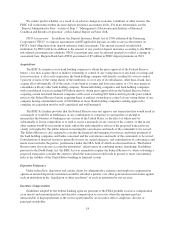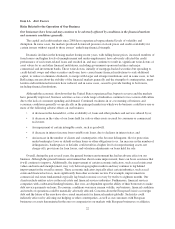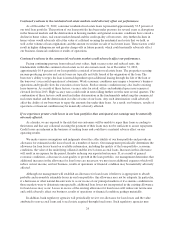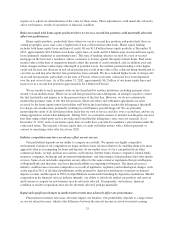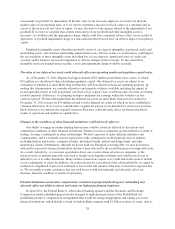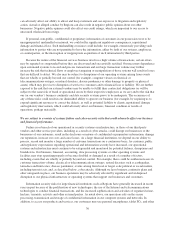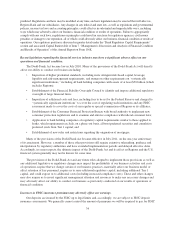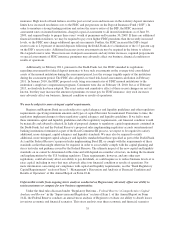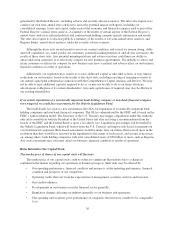Regions Bank 2012 Annual Report Download - page 42
Download and view the complete annual report
Please find page 42 of the 2012 Regions Bank annual report below. You can navigate through the pages in the report by either clicking on the pages listed below, or by using the keyword search tool below to find specific information within the annual report.assets (primarily loans and investment securities) and the interest expense incurred in connection with interest-
bearing liabilities (primarily deposits and borrowings). The level of net interest income is primarily a function of
the average balance of interest-earning assets, the average balance of interest-bearing liabilities and the spread
between the yield on such assets and the cost of such liabilities. These factors are influenced by both the pricing
and mix of interest-earning assets and interest-bearing liabilities which, in turn, are impacted by external factors
such as the local economy, competition for loans and deposits, the monetary policy of the Federal Open Market
Committee of the Federal Reserve System (the “FOMC”) and market interest rates.
The cost of our deposits and short-term wholesale borrowings is largely based on short-term interest rates,
the level of which is driven primarily by the FOMC’s actions. However, the yields generated by our loans and
securities are typically driven by longer-term interest rates, which are set by the market through benchmark
interest rates such as the London Interbank Offered Rates (“LIBOR”) or, at times, the FOMC’s actions, and
generally vary from day to day. The level of net interest income is therefore influenced by movements in such
interest rates and the pace at which such movements occur. Interest rate volatility can reduce unrealized gains or
create unrealized losses in our portfolios. If the interest rates on our interest-bearing liabilities increase at a faster
pace than the interest rates on our interest-earning assets, our net interest income may decline and, with it, a
decline in our earnings may occur. Our net interest income and earnings would be similarly affected if the
interest rates on our interest-earning assets declined at a faster pace than the interest rates on our interest-bearing
liabilities. In particular, short-term interest rates are currently very low by historical standards, with many
benchmark rates, such as the federal funds rate and the one- and three-month LIBOR near zero. These low rates
have reduced our cost of funding which has caused our net interest margin to increase.
Our current one-year interest rate sensitivity position is moderately asset sensitive, meaning that an
immediate or gradual increase in interest rates would likely have a positive cumulative impact on Regions’
twelve-month net interest income. Alternatively, an immediate or gradual decrease in rates over a twelve-month
period would likely have a negative impact on twelve-month net interest income.
An increasing interest rate environment would also increase debt service requirements for some of our
borrowers. Such increases may adversely affect those borrowers’ ability to pay as contractually obligated and
could result in additional delinquencies or charge-offs. Our results of operations and financial condition may be
adversely affected as a result.
For a more detailed discussion of these risks and our management strategies for these risks, see the “Net
Interest Income and Margin,” “Market Risk – Interest Rate Risk” and “Securities” sections of Item 7.
“Management’s Discussion and Analysis of Financial Condition and Results of Operation” of this Annual Report
on Form 10-K.
Obligations currently rated below investment grade as well as possible future reductions in our credit ratings
may increase our funding costs, place limitations on business activities related to providing credit support to
customers, or contribute to ineffective liquidity management.
The major rating agencies regularly evaluate us and their ratings are based on a number of factors, including
our financial strength and conditions affecting the financial services industry generally. From 2008 through 2010,
all of the major ratings agencies downgraded Regions’ and Regions Bank’s credit ratings and many issued
negative outlooks. Negative watch, negative outlook or other similar terms mean that a future downgrade is
possible. From August 2011 through October 2012, however, four major rating agencies, Standard & Poor’s
(S&P), Fitch Ratings (Fitch), Moody’s Investor Services (Moody’s) and Dominion Bond Rating Service
(DBRS), upwardly revised their outlook of Regions from negative to stable and/or positive reflecting the
Company’s continued improvement in earnings performance, core capital position, and maintenance of a strong
liquidity profile. Subsequent to the upward revision on their outlook, in March 2012, S&P upgraded the credit
ratings of Regions and Regions Bank (including an upgrade of Regions’ senior debt rating from BB+ to BBB-)
following Regions’ March 2012 stock offering and redemption of 3.5 million shares of Series A preferred stock
26




